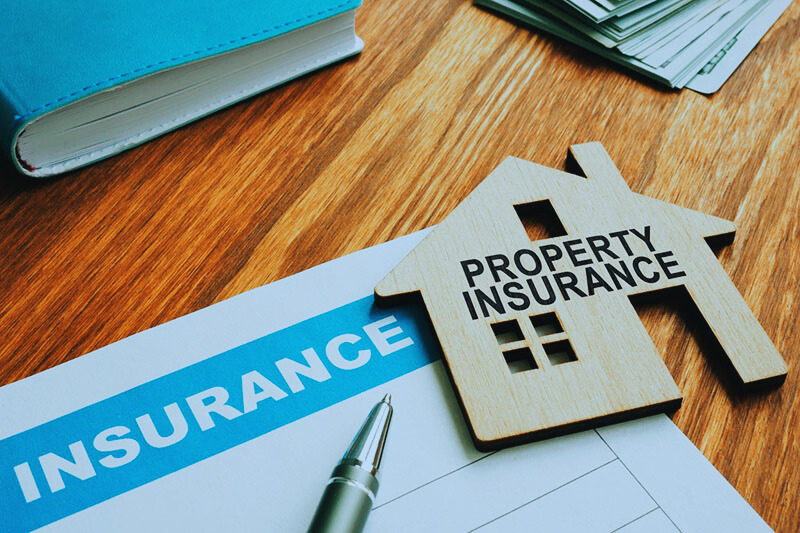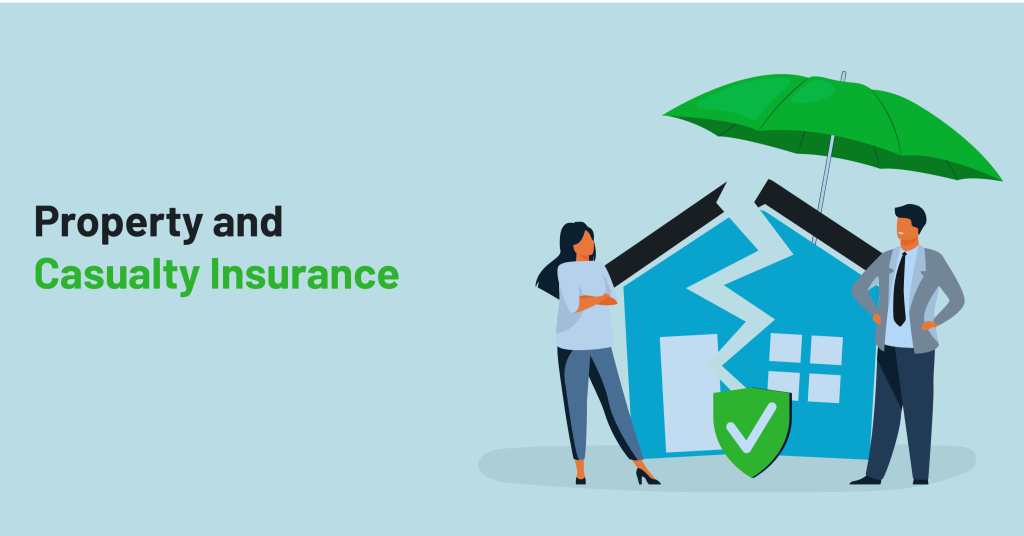Commercial property and casualty Insurance is an essential coverage solution for businesses, providing protection for both their physical assets and liabilities. In a world where companies face various risks—from natural disasters to potential lawsuits—this insurance is crucial.
This coverage allows businesses to manage the impact of unexpected events, covering repair or replacement costs for damaged property and offering liability protection in case of legal claims. Commercial property and casualty insurance is a great coverage for effective risk management, ensuring that businesses can continue to operate smoothly, even in challenging situations. In this article, we’ll go into detail about what is commercial property and casualty insurance, its types and how it’s used in today’s business.
What Is Commercial Property and Casualty Insurance?
Commercial property and casualty insurance is a type of business insurance that provides both asset protection and liability coverage in a single package. Property insurance primarily protects a business’s tangible assets, such as buildings, equipment, and inventory. On the other hand, casualty insurance, also known as liability insurance, covers situations where the business may be held legally responsible for damages or injuries to others.
Together, these two types of coverage protect a business from a range of potential losses, offering financial security and continuity when unexpected incidents occur. By investing in commercial property and casualty insurance, businesses can better safeguard their investments, assets, and reputation.
Key Components of Commercial Property Insurance
As we’ve mentioned, this type of insurance protects a business’s physical assets, providing essential coverage to minimize losses when unexpected events occur. Let’s look at some of the key components this insurance has:
- Protection for physical assets – covers a business’s assets, including buildings, equipment, furniture, and inventory. This coverage ensures that if property damage occurs—such as from a fire or other unexpected events—the costs for repairs or replacements are covered.
- Business interruption coverage – provides compensation if a business has to temporarily stop operations due to property damage. This helps maintain cash flow and covers essential expenses like payroll, rent, and utilities until the business can resume normal operations.
- Customizable coverage options – policies can be tailored to address specific risks based on the business’s location and industry. Coverage options might include protection against natural disasters, theft, or other common hazards that could impact physical assets.
- Risk-specific protection – customizing commercial property insurance to meet unique risk factors allows businesses to ensure their assets are protected against the most relevant threats, minimizing potential financial setbacks.
This approach enables businesses to manage a wide range of property-related risks, helping to safeguard essential assets and maintain continuity.

Key Components of Commercial Casualty (Liability) Insurance
The casualty, or liability, component of commercial property and casualty insurance provides essential coverage to protect businesses from potential financial losses due to legal claims. Key aspects of casualty insurance include:
- Liability protection for accidents and damages – this coverage safeguards against claims involving bodily injury or property damage that may occur due to the business’s activities. For instance, if a customer is injured on the premises or if an employee accidentally damages a client’s property, liability insurance steps in to cover related costs.
- Critical for customer-facing businesses – casualty insurance is particularly valuable for businesses with direct customer interactions, such as those in the retail or hospitality industries, where accidents are more likely to occur.
- Types of liability coverage – within casualty insurance, various types of liability protection are tailored to a business’s specific risks:
- General liability insurance – covers broad claims of bodily injury or property damage, applicable to most types of businesses.
- Product liability insurance – provides protection if a product the business sells or manufactures causes harm to a user.
- Professional liability insurance – also known as errors and omissions (E&O) insurance, protects service-based businesses from claims related to professional errors or negligence.
- Legal defense coverage – In the event of a lawsuit, commercial casualty insurance often covers not only settlement expenses but also legal defense costs. This feature reduces the financial burden on the business and ensures it has the support needed to handle legal challenges effectively.
This comprehensive liability protection is crucial for maintaining a business’s financial health and reputation in the face of potential legal claims.
Differences Between Commercial Property and Casualty
While this insurance policy combines both property and liability coverage, there are a few differences between property and casualty insurance. Property insurance focuses on protecting physical assets—such as buildings and equipment—against damage, theft, or destruction.
In contrast, casualty insurance is designed to cover legal claims resulting from injuries or damages caused by the business, its operations, or employees. For example, property insurance might pay for fire damage to a warehouse, while casualty insurance would handle a lawsuit if a third party sued over injuries caused by that fire.
The need for both types of coverage often depends on the business’s operations. Some industries require more extensive property protection, while others may prioritize liability coverage. Both are essential components of commercial property and casualty insurance, ensuring that businesses can effectively cover a wide range of risks.
Types of Businesses That Need This Coverage
Many different businesses, regardless of industry, benefit from the protection offered by commercial property and casualty Insurance. However, some sectors face higher exposure to property and liability risks, and it’s differently evaluated who needs this coverage. For example, manufacturing companies require significant property coverage for equipment and machinery and liability protection for potential workplace injuries. Retail businesses also need strong protection for their physical assets, including storefronts and inventory, while liability coverage is critical for managing the risk of customer accidents.
Similarly, real estate and construction industries deal with substantial property risks and liability issues due to the nature of property development and building activities. Healthcare providers, on the other hand, place a higher emphasis on liability coverage due to their interaction with patients and the potential for malpractice claims. By customizing their commercial property and casualty insurance policies, these businesses can address their unique industry risks effectively.
How This Coverage Protects a Business
Commercial property and casualty insurance covers different aspects of the bussines . It provides a safety net against the impact of property losses or liability claims, allowing businesses to operate with greater confidence. For example, if a business’s building is damaged in a storm, property insurance covers the repair costs, sparing the business from a major financial setback. Liability coverage, meanwhile, can protect a business from the high costs associated with lawsuits or claims, including legal fees and settlement costs.
This insurance also plays an important role in ensuring business continuity. In cases where property damage disrupts operations, business interruption coverage allows companies to keep paying bills, rent, and wages while repairs are completed. This is particularly valuable for businesses heavily reliant on their physical premises or specialized equipment, as it enables them to maintain operations even during challenging times. By providing legal and financial protection, commercial property and casualty insurance allows businesses to focus on growth, confident in the knowledge that they’re prepared for unexpected challenges.

Understanding Coverage Limits and Deductibles
Coverage limits and deductibles are key considerations for any commercial property and casualty insurance policy. The coverage limit represents the maximum amount an insurance provider will pay in the event of a claim. It’s important for businesses to choose coverage limits that reflect the full value of their assets and potential liability exposures. A limit too low may leave the business responsible for significant out-of-pocket costs in a worst-case scenario.
Deductibles, or the amount the business pays before insurance coverage kicks in, also impact the cost of the policy. Higher deductibles generally result in lower premiums but mean the business must cover more expenses when filing a claim. Striking a balance between coverage limits and deductibles is crucial. Businesses should assess their risk tolerance and financial resources to determine the optimal policy structure. Commercial property and casualty insurance should provide comprehensive protection without creating undue financial strain.
Common Exclusions and Limitations
Like any insurance policy, commercial property and casualty insurance includes exclusions and limitations that define what events and circumstances are not covered. Common exclusions often include natural disasters such as earthquakes or floods, which may require separate coverage or riders. Other typical exclusions are intentional damage and injuries to employees, as employee-related injuries are typically covered by workers’ compensation policies.
Additionally, some industries face unique exclusions and may need to add specific coverages to ensure full protection. For example, technology companies often consider cyber liability insurance, while construction firms may need pollution liability coverage. To avoid potential gaps in protection, it’s essential for businesses to review their commercial property and casualty insurance policies thoroughly. Customizing policies to address these limitations allows businesses to cover potential vulnerabilities and avoid costly surprises.
Conclusion
In today’s uncertain environment, commercial property and casualty insurance is an essential coverage for businesses, offering extensive protection for assets and liability risks. By covering property damage, liability claims, and even business interruption, this insurance helps companies manage a wide range of potential losses, ensuring they can continue operating effectively.
For businesses aiming to safeguard their investments and foster stability, commercial property and casualty insurance provides a comprehensive approach to risk management. It allows them to focus on growth while being prepared for unexpected challenges. Additionally, agencies opting for P&C insurance outsourcing can further support insurance agencies by streamlining insurance management processes, improving efficiency, and reducing administrative burdens.
